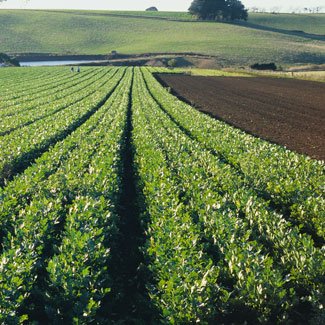Clean and green tag can be misleading

The promise of clean and green food is difficult to keep, Australian contaminant scientist Professor Ravi Naidu says.
The Cooperative Research Centre for Contamination Assessment and
Remediation of the Environment managing director says despite excellent
food regulation and safeguards in Australia, we face an unprecedented
cocktail of toxic substances in our daily lives.
“Today the human body has to deal with a complex array of chemicals
arriving via our indoor and outdoor air, in our water supplies, and as
residual chemicals in our food supply,” Professor Naidu says.
“At no time in its evolution has the human body had such an onslaught of unfamiliar and toxic substances to deal with.”
Australian food producers have an enviable global reputation for being
clean and green, which helps us compete in international markets,
Professor Naidu says.
However, we are also heavy users of chemicals and fertilisers – not to
mention big consumers of fossil fuel per kilogram of food produced.
“We must avoid complacency about the ‘clean and green’ reputation of
our foodstuffs,” Professor Naidu says. “We may not be quite so clean or
quite so green as we like to think.
“As well as the new types of chemicals and materials, we need to keep
educating industries and consumers about the risks that existing common
contaminants represent to our soils and water and therefore our food.”
New substances, being invented every week, can enter the body’s tissues
and organs long before medical science can fully understand what their
effect may be, he says.
“For example, we simply don’t know enough about the rapidly increasing
range of nanoparticles being used in the manufacturing sector, or how
they will behave in our bodies or affect our health,” Professor Naidu
says.
The huge release of lead dust in Esperance in 2007, the long-term
fallout onto crops and grazing lands from smelters, the dust from
exposed mining operations blown long distances, and the leaching from
generations of poorly managed arsenic cattle and sheep dips, landfills,
petroleum tanks and other pollution sources are all common examples of
existing contamination, he says.
“We need to remember that in the long-term it is more likely that
science will discover precisely how these materials creep into our food
supplies and injure us than come up with easy and cheap solutions to
restore our damaged health,” he warns.
In addition to home-grown problems, Australian consumers also face real
risks from imported foodstuffs that are poorly regulated in the country
of origin. The presence of mercury in some imported fish products is an
example. Some Asian vegetable imports may also be grown under
conditions that would not be acceptable in Australia.
Professor Naidu says growing cities are encroaching on what was once
our most productive land, while freshwater supplies are shrinking and
energy costs escalating, while the Australian population is exploding
at the fastest rate in the developed world.
“This is going to lead us into increasingly intense forms of food
production which carry with them extra risks of contamination from
chemicals and fertilisers,” he says.
An example is the risk of endocrine disruptor chemicals entering our food chain when we irrigate with recycled wastewater.
“Whether we are talking about unknowingly growing our vegies in
backyards that used to be industrial land, or in soil polluted by old
waste from careless businesses, or about large areas of dry or
irrigated farmland, we cannot afford to relax measures that prevent
food contamination,” Professor Naidu says.
He says rapid new sensors of toxic metals being developed by the CRC CARE could make a real contribution to future food safety.
What’s next?
Food: Shop for the future
More news

